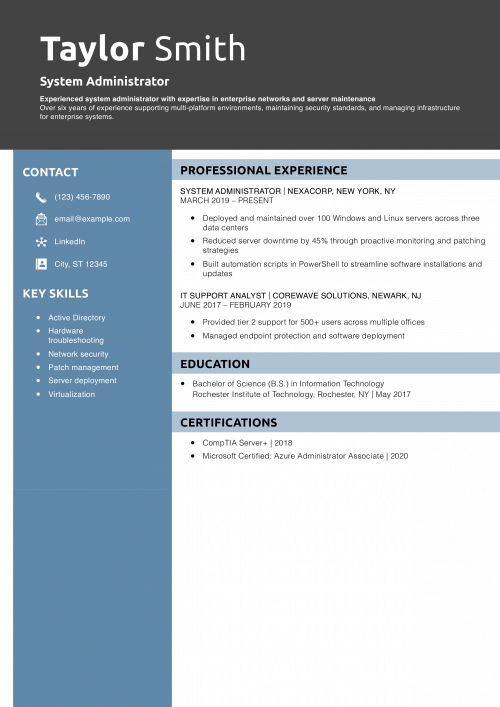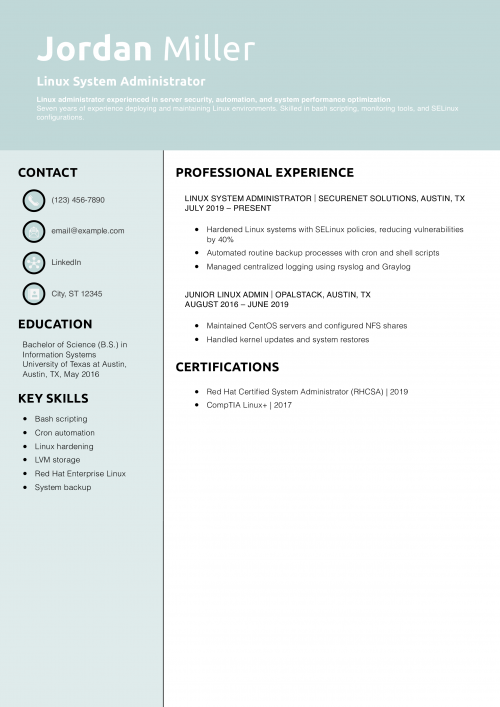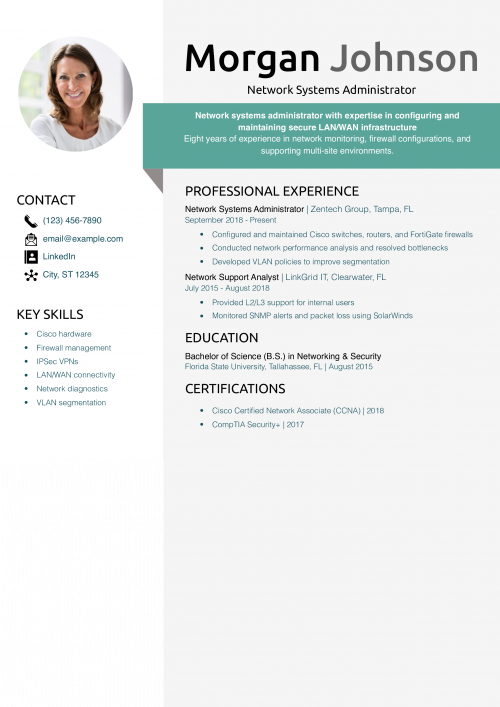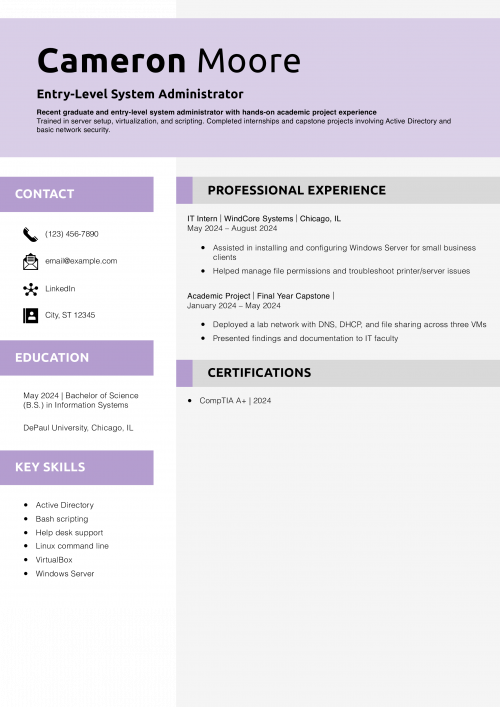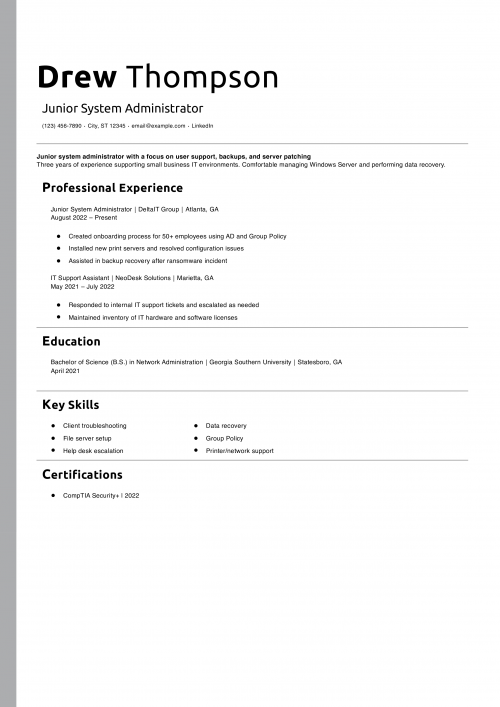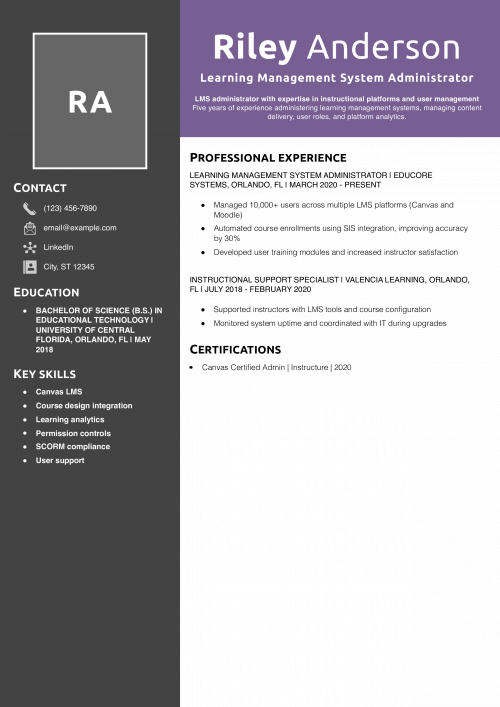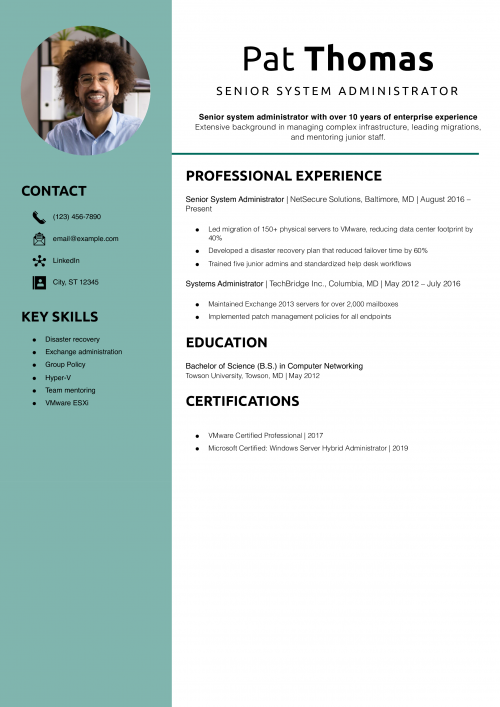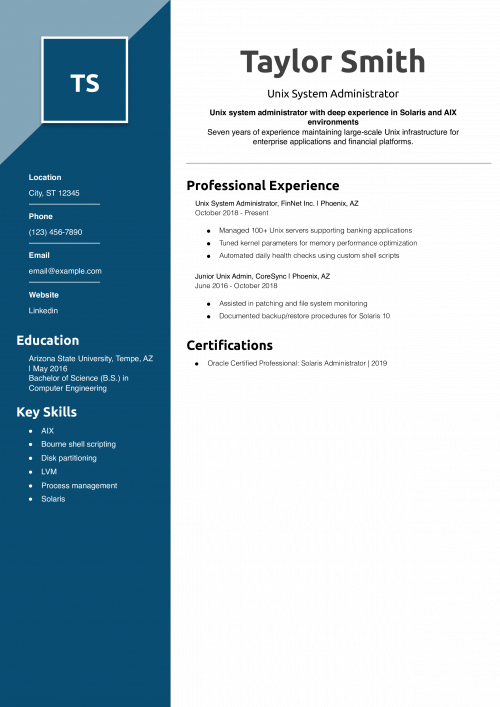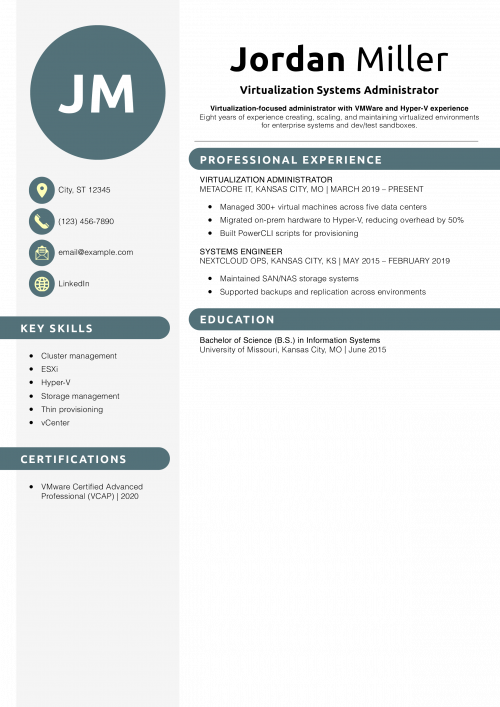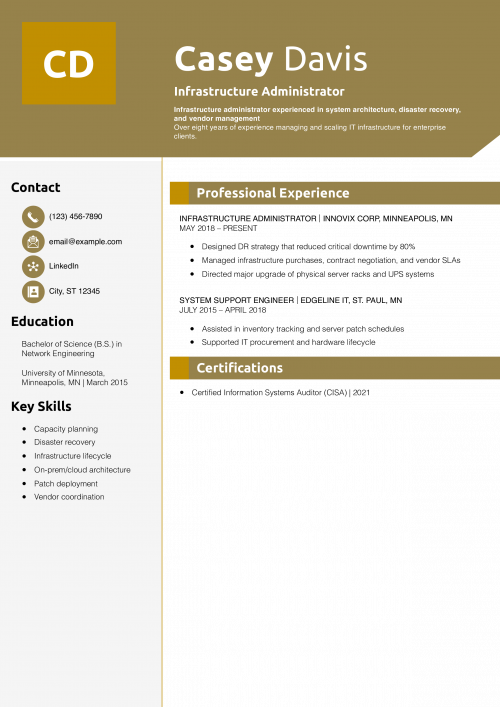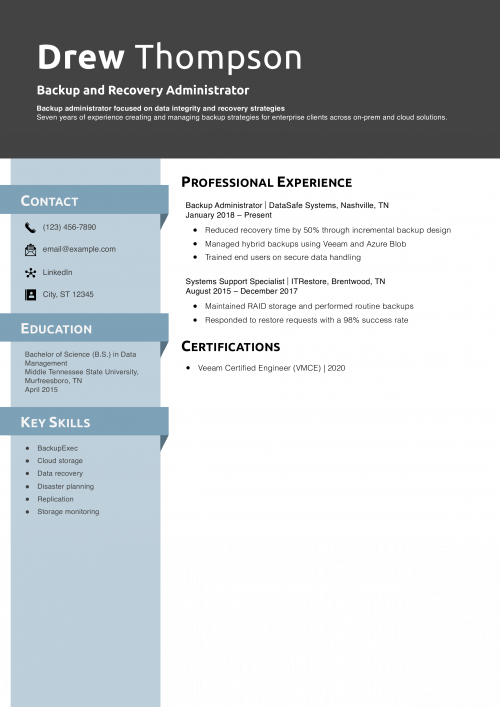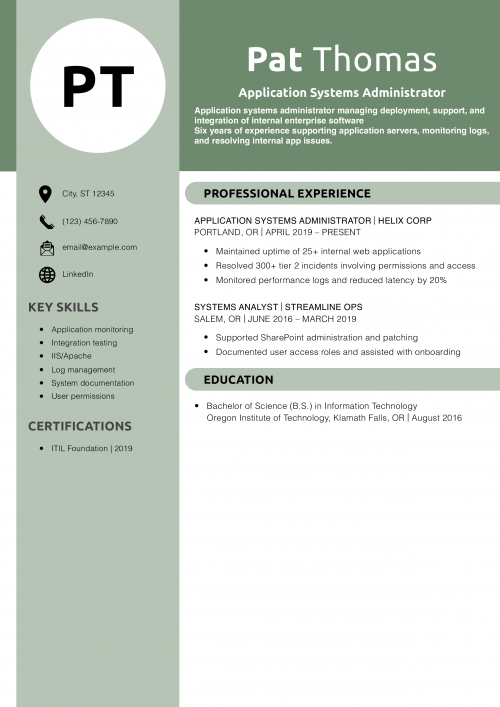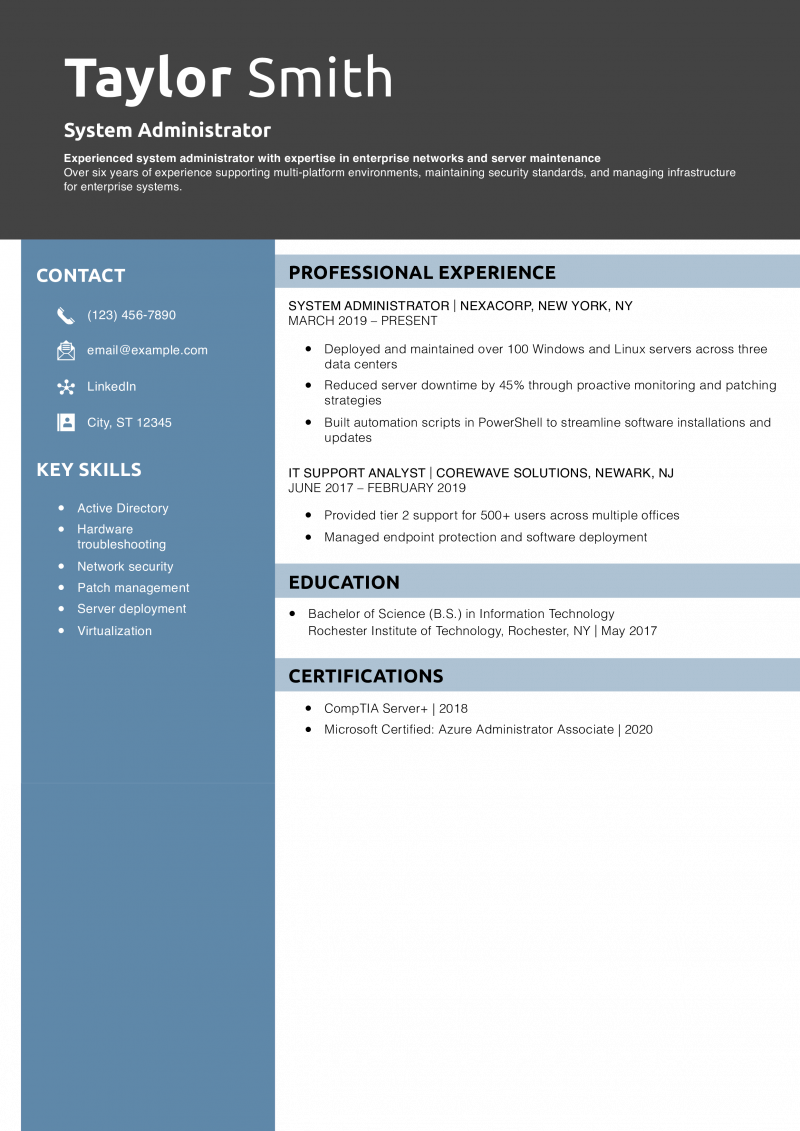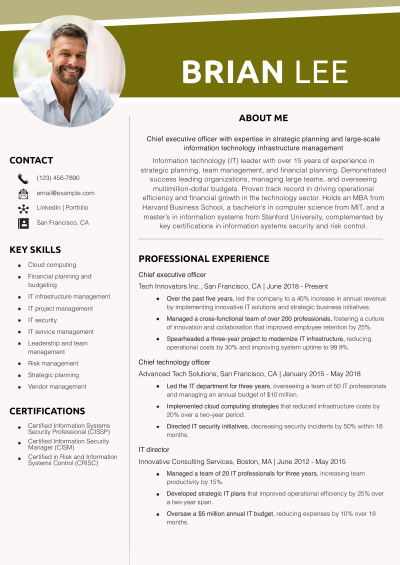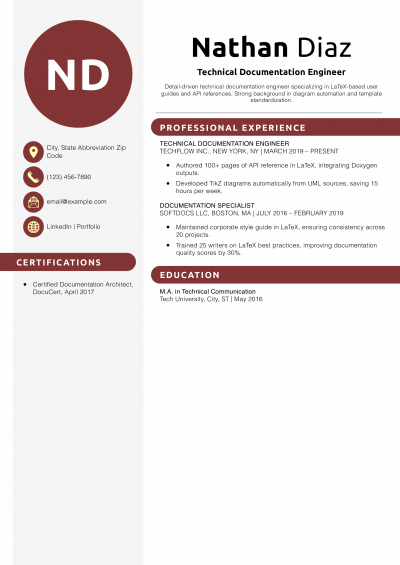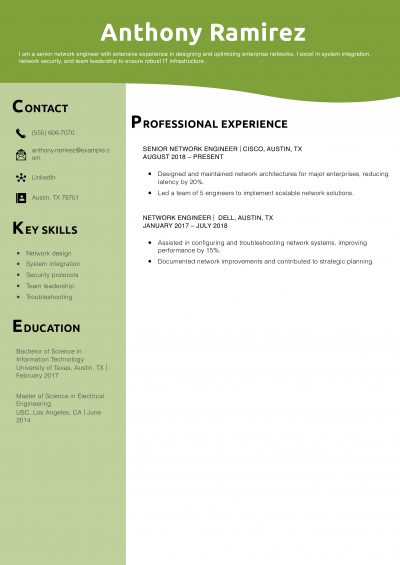A good system administrator resume focuses on your relevant skills like user support, server maintenance, or network security protocols. Give examples of your success as a system administrator or in similar roles, and show your knowledge base by citing any degree or certificate programs you’ve done. This guide provides expert tips to help you create a persuasive resume showing your best system administrator qualifications.
Key takeaways:
- Brainstorm details about your work history on a separate document or sheet of paper. Then, identify the most relevant ones to feature in your experience section – this helps you focus your resume on the system administrator role.
- Use bullet points to display your achievements. Start each bullet point with a strong verb like “Created” or “Enhanced.”
- Spell out the positive impact of your work as a system administrator. Describe how your efforts helped the wider organization achieve its goals.
Most Popular System Administrator Resumes
System Administrator Resume Example

Why this system administrator resume example is strong
Taylor’s resume demonstrates clear career progression with quantifiable achievements. The standouts are the PowerShell scripting and server performance improvements.
Key Tips:
- Automating processes shows initiative and technical skill
- Use data to showcase the results of your maintenance work
Want more examples? Explore how to write a resume summary.
IT System Administrator Resume Example

Why this IT system administrator resume example is strong
Alex blends user-facing experience with core infrastructure responsibilities. Their resume is accessible but shows technical strength and system impact.
Key Tips:
- Show user scale (number of users supported, locations, ticket volume)
- Mix soft tech (SaaS) and hardware admin tasks
Learn more at what to put on a resume.
Linux System Administrator Resume Example
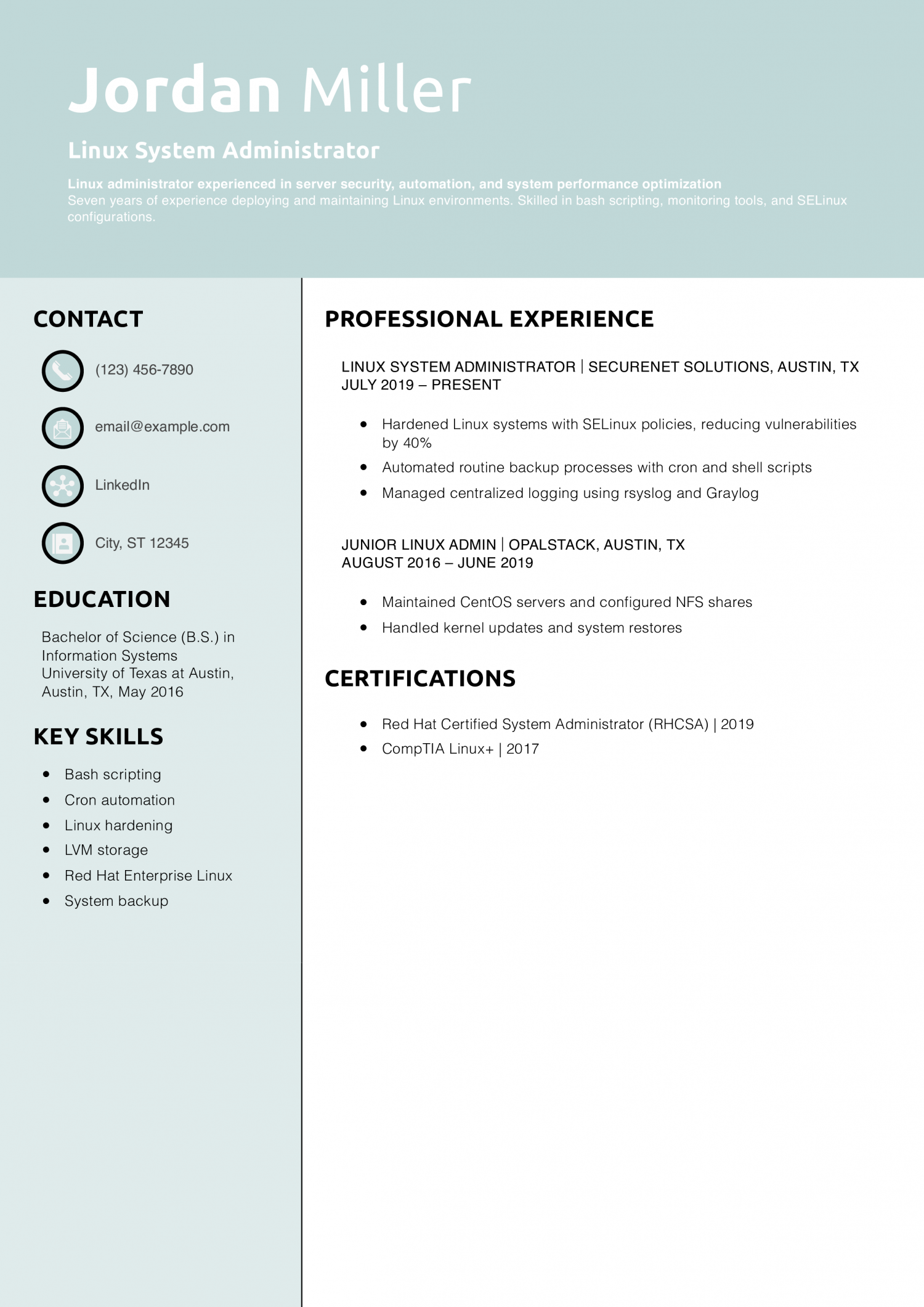
Why this Linux system administrator resume example is strong
Jordan presents deep technical knowledge and practical security work. Their automation efforts reflect a proactive and skilled admin.
Key Tips:
- Security-focused skills like SELinux and system hardening are highly valued
- Use command-line examples to add credibility
Want more advice? Check out resume action words.
Network Systems Administrator Resume Example
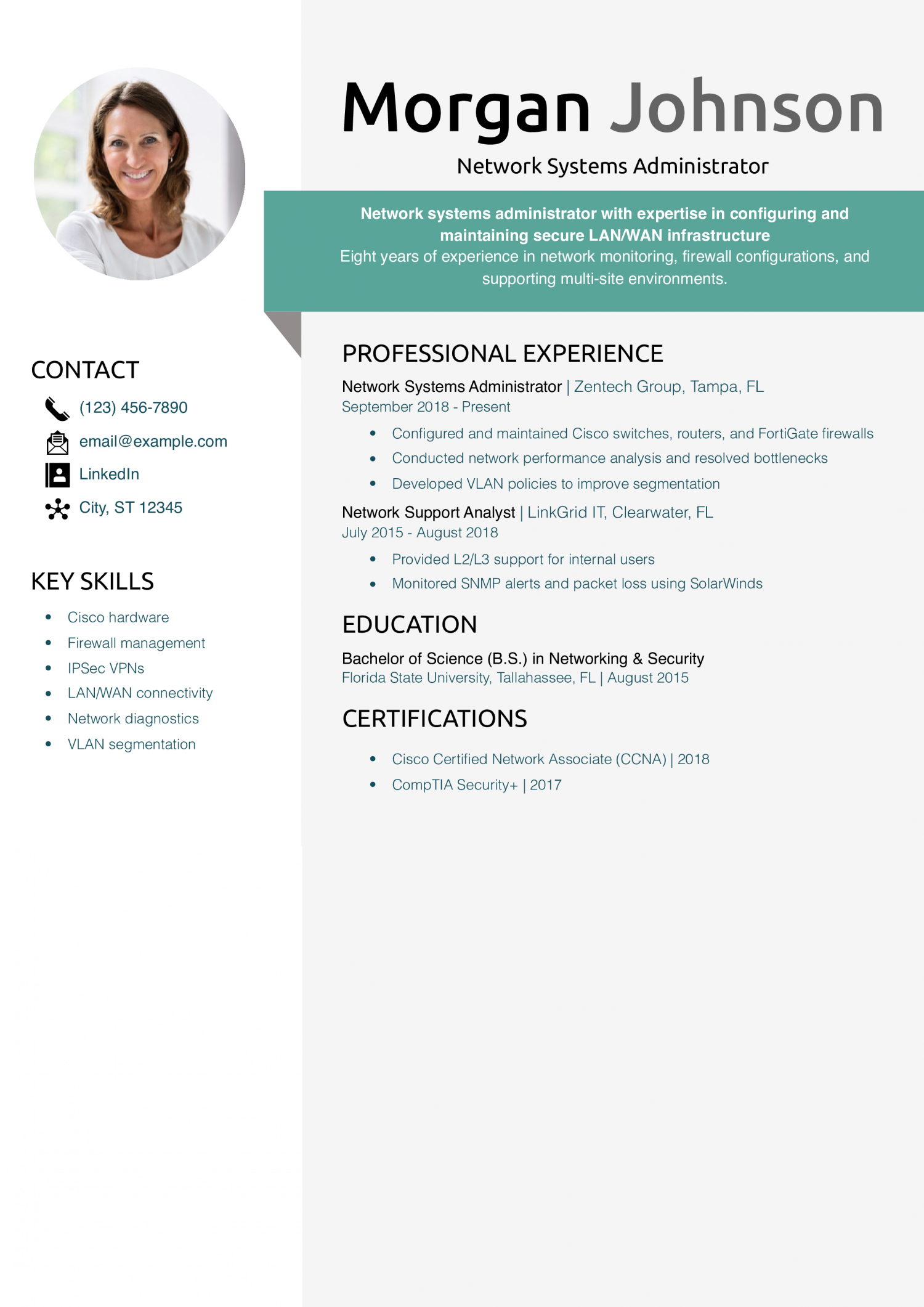
Why this network systems administrator resume example is strong
Morgan’s resume demonstrates relevant certifications, technical hardware knowledge, and quantifiable improvements to security and performance.
Key Tips:
- Certifications like CCNA show network authority
- Always highlight specific hardware/software brands
Need more tips? Explore technical skills in IT resume.
AWS System Administrator Resume Example

Why this AWS system administrator resume example is strong
Casey demonstrates a solid understanding of cloud systems and security. They’ve included AWS-specific tools and metrics, making the resume keyword-rich and impactful.
Key Tips:
- Highlight cloud cost savings or uptime improvements
- Include specific AWS services used
Azure System Administrator Resume Example

Why this Azure system administrator resume example is strong
Jamie’s resume is tailored to cloud administrators working in Microsoft environments. They clearly detail hybrid experience and PowerShell automation.
Key Tips:
- Use Azure-specific terminology and tools
- Mention hybrid environments or AD sync setups
Learn more at how to list skills on a resume.
Entry-Level System Administrator Resume Example
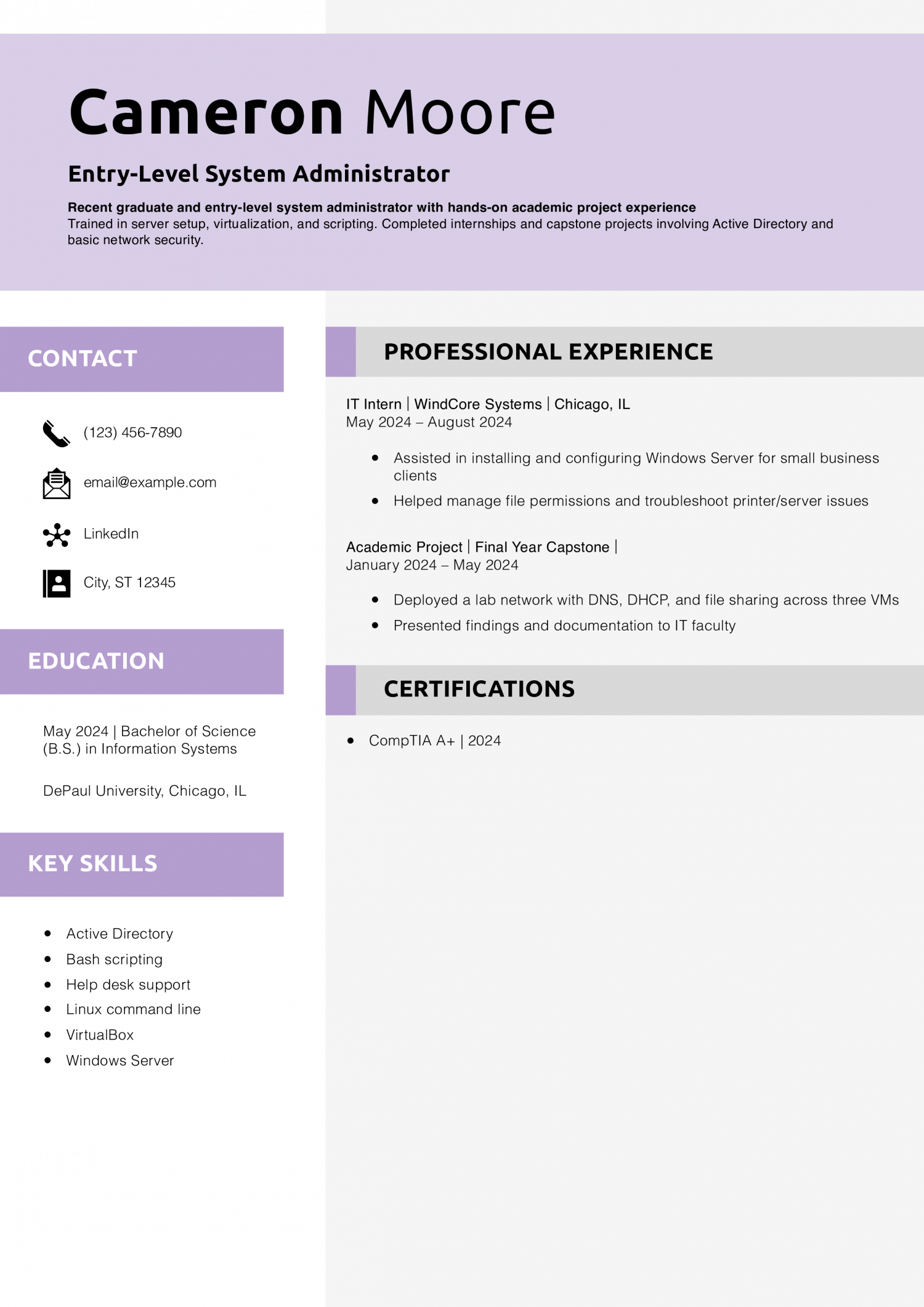
Why this entry-level system administrator resume example is strong
Cameron shows initiative and learning. They turn schoolwork into meaningful resume experience and pair it with a real internship.
Key Tips:
- Don’t hide academic experience — present it as real-world training
- Certifications like A+ show commitment
New to the field? Check how to make a resume with no experience.
Junior System Administrator Resume Example
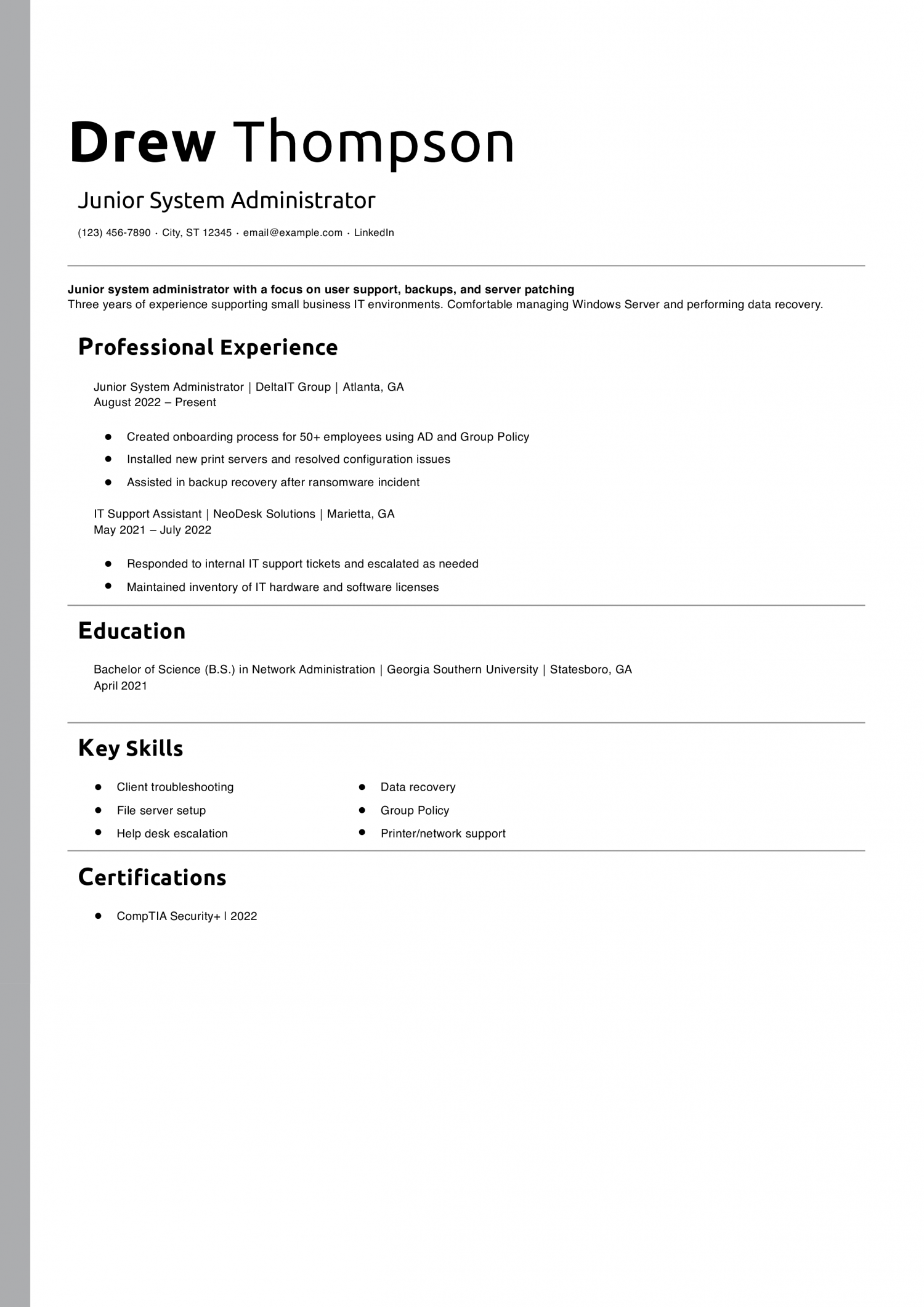
Why this junior system administrator resume example is strong
Drew’s resume uses action-oriented language and includes quantifiable tasks that show growth potential.
Key Tips:
- Highlight the systems you worked with, even in an assistant role
- Use your experience to show process improvement
Need more guidance? Check out career advice: resume job description.
Learning Management System Administrator Resume Example

Why this LMS administrator resume example is strong
Riley can support large user bases, troubleshoot, and provide educator-focused value, which is critical in education tech.
Key Tips:
- Emphasize platforms (Canvas, Moodle, Blackboard, etc.)
- Use terms like SCORM and SIS integration
See how to list education on a resume for more formatting ideas.
Senior System Administrator Resume Example
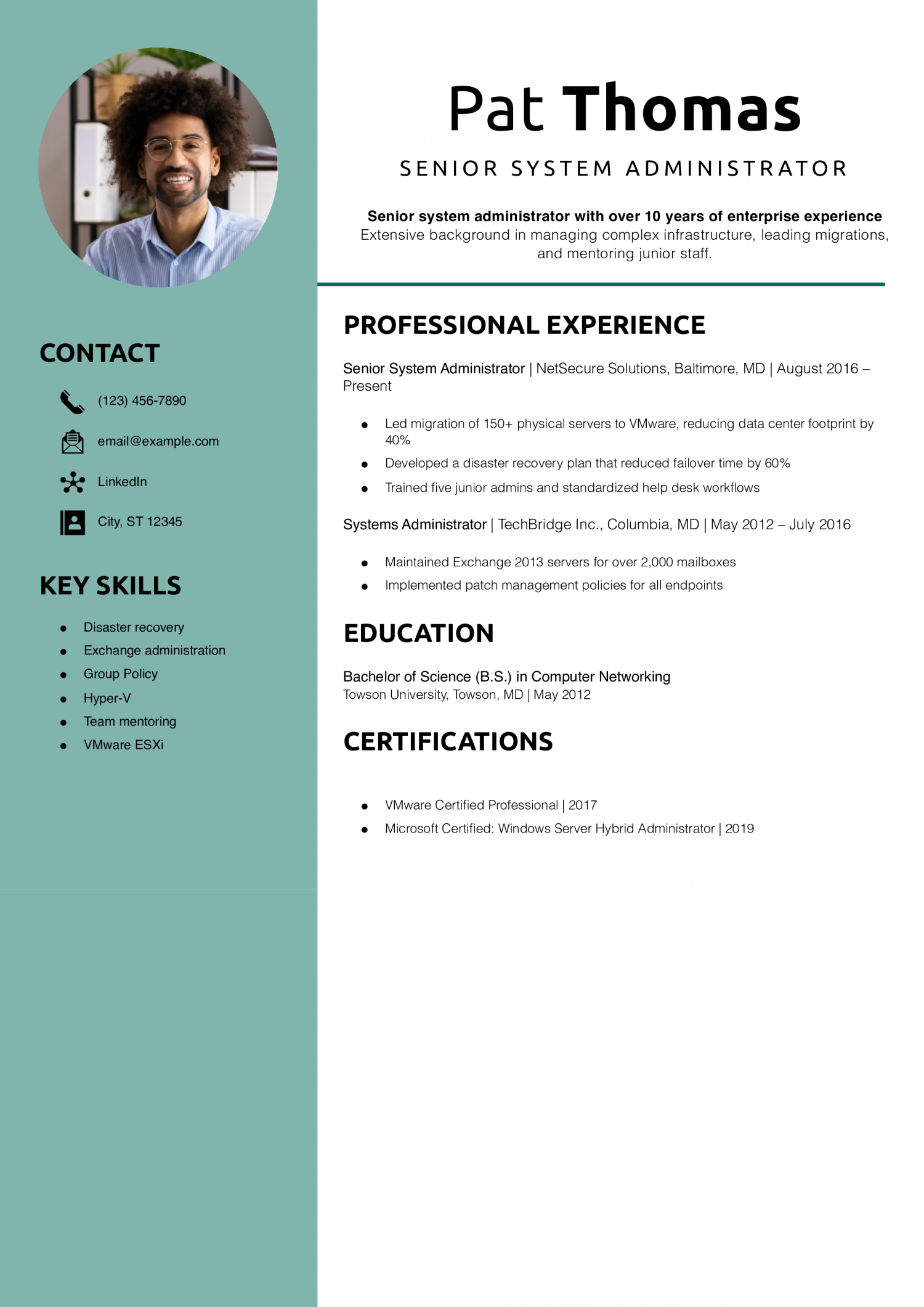
Why this senior system administrator resume example is strong
Pat highlights senior-level leadership and technical responsibility. Mentorship and measurable infrastructure upgrades add impact.
Key Tips:
- Show strategic contributions, not just daily tasks
- Training/mentorship experience is valuable at senior levels
Want a stronger profile section? Read how to write a convincing resume profile.
Unix System Administrator Resume Example

Why this Unix system administrator resume example is strong
Taylor’s use of legacy OS knowledge and attention to detail in shell scripting demonstrates readiness for high-stakes environments.
Key Tips:
- Highlight specific Unix flavors (AIX, Solaris, etc.)
- Include kernel tuning or scripting skills
For more like this, check computer skills for resume.
Windows System Administrator Resume Example
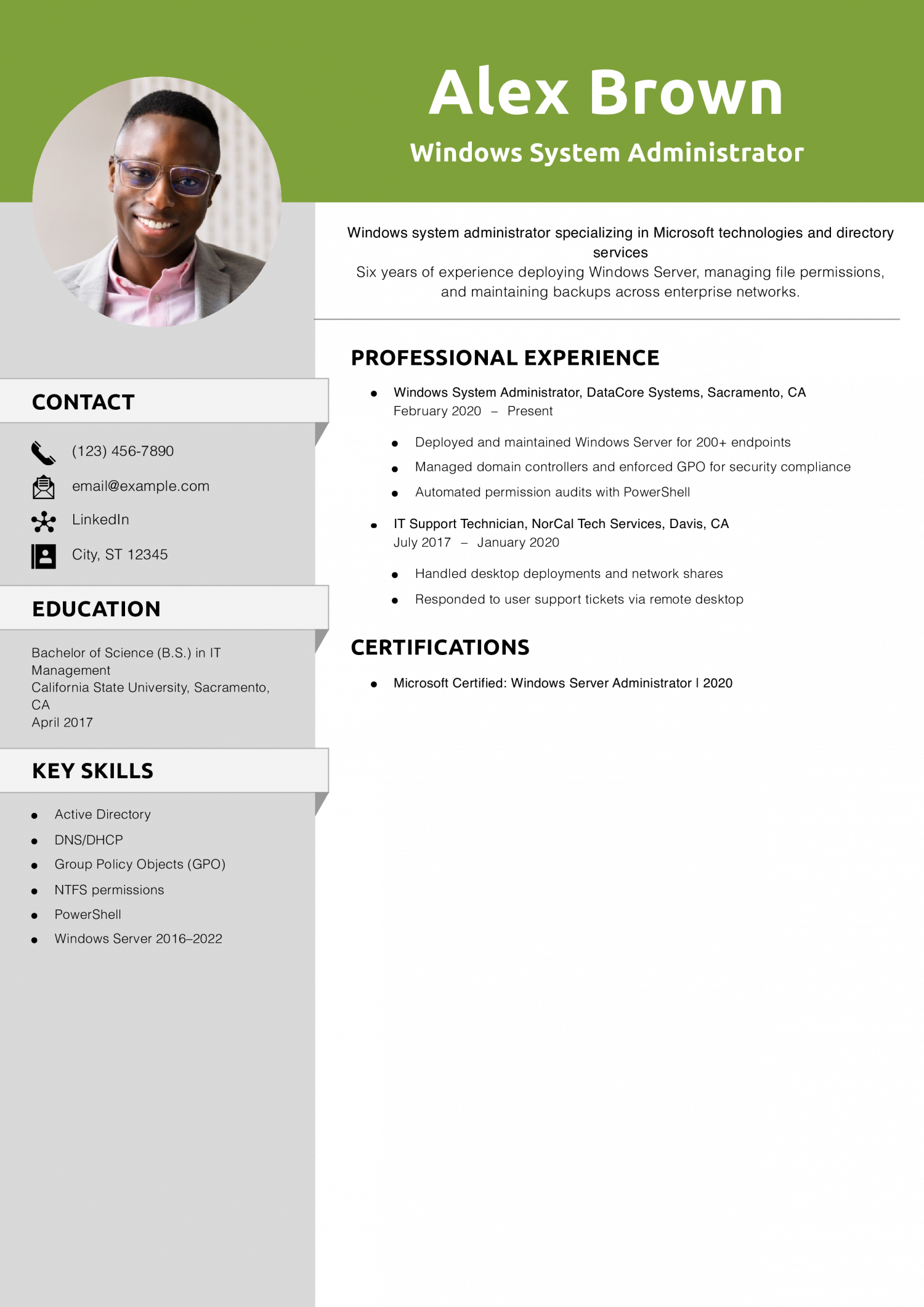
Why this Windows admin resume example is strong
Alex effectively demonstrates Microsoft-focused expertise with hands-on examples of systems administration and automation.
Key Tips:
- Use PowerShell tasks to stand out
- Mention domain and directory responsibilities
Learn how many jobs you should list on a resume to optimize length.
Virtualization Systems Administrator Resume Example
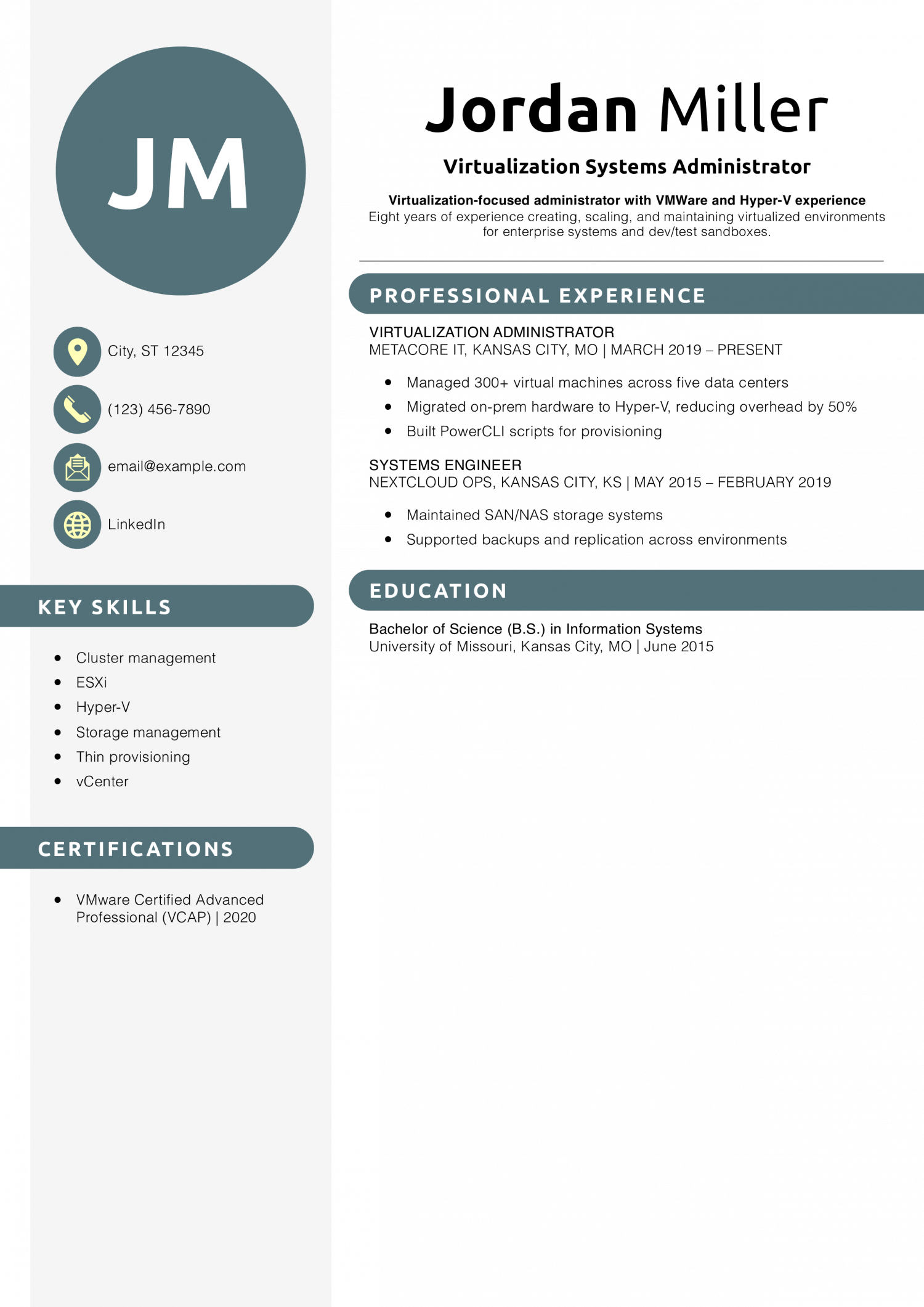
Why this virtualization system administrator resume is strong
Jordan presents expertise in VMware and Microsoft environments and automation work that reflects real impact.
Key Tips:
- Mention VMs under management
- Emphasize tools used (vCenter, PowerCLI, etc.)
Want to fine-tune structure? Check out best resume formats.
Cloud Systems Administrator Resume Example

Why this cloud systems administrator resume example is strong
Morgan’s resume balances hybrid and cloud-native work, showcasing automation tools employers look for.
Key Tips:
- Mention automation tools like Terraform or CloudFormation
- Show hybrid strategy experience
Learn how to refine this section at how to show a promotion on a resume.
Infrastructure Administrator Resume Example
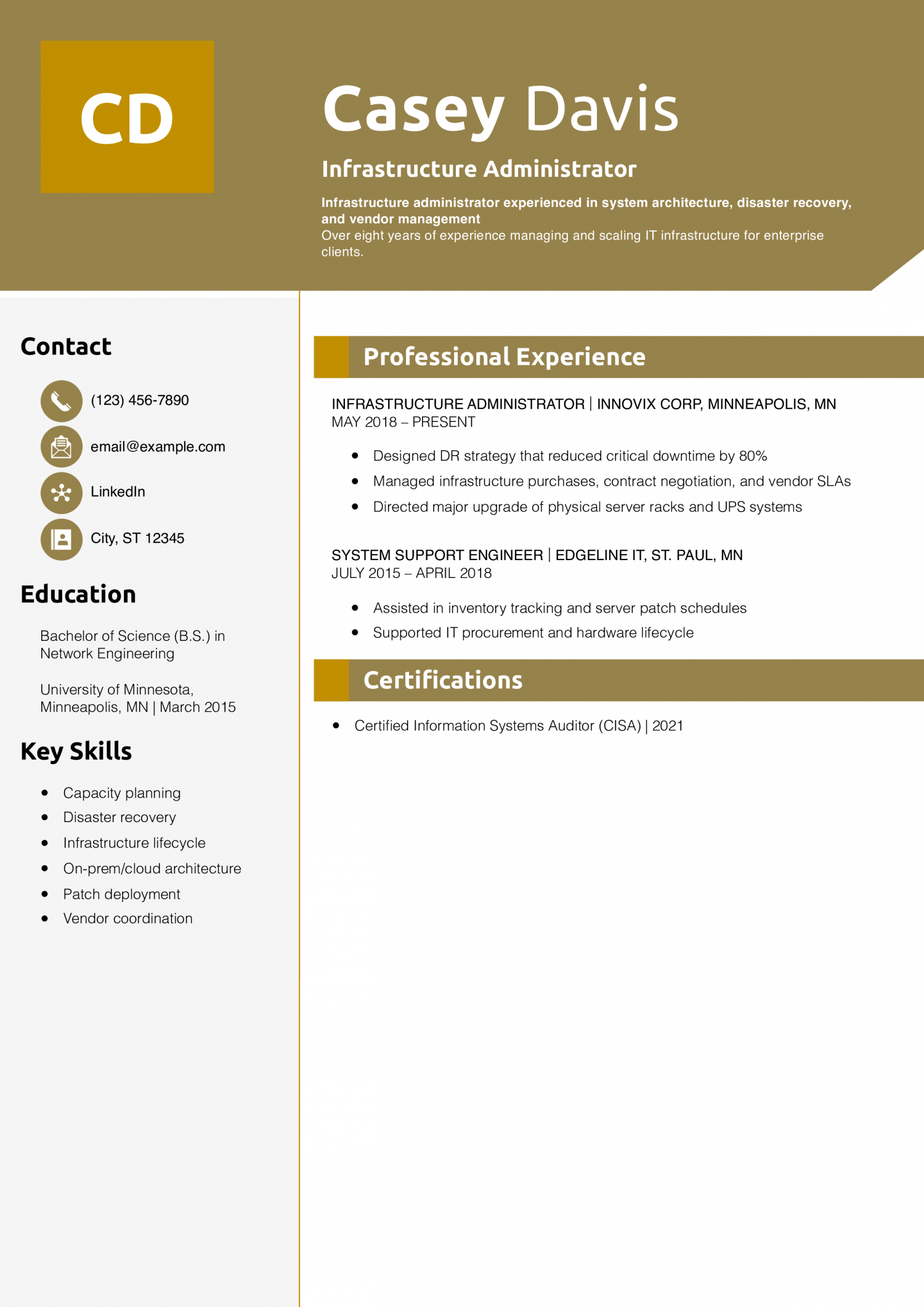
Why this infrastructure administrator resume example is strong
Casey’s resume goes beyond software to show infrastructure ownership and real ROI. Leadership in procurement and DR planning makes them stand out.
Key Tips:
- Include vendor relationships or hardware upgrades
- Detail disaster recovery responsibilities
Need help presenting results? See resume personal statement examples.
Virtual Desktop Infrastructure (VDI) Administrator Resume Example
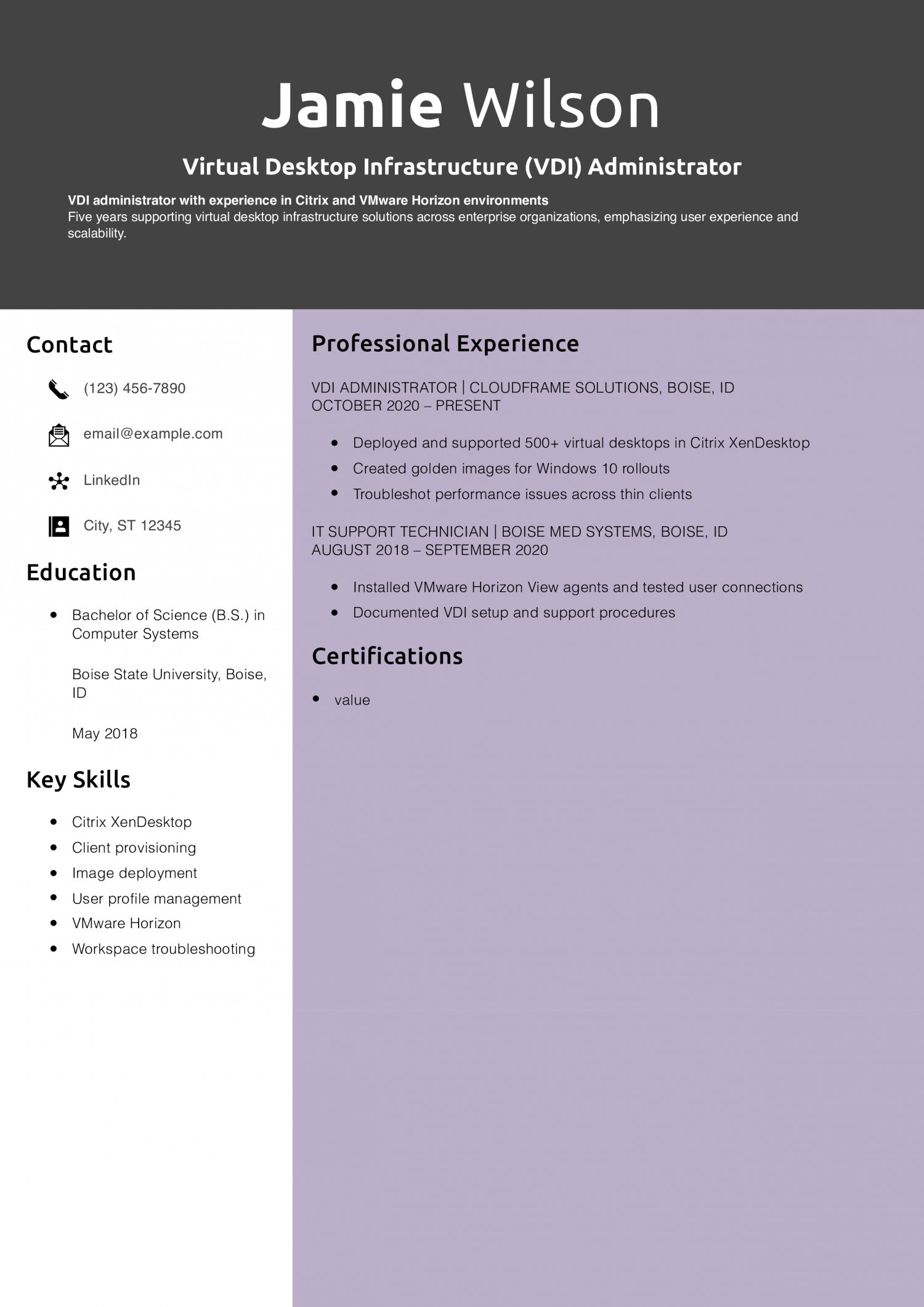
Why this VDI administrator resume example is strong
Jamie shows clear knowledge of the VDI platform and user-focused results. They also include key details on image management and virtual performance.
Key Tips:
- Specify platforms (Citrix, Horizon)
- Mention image and profile management
Want your formatting to stand out? Visit career advice: best looking resumes.
DevOps Systems Administrator Resume Example

Why this DevOps system administrator resume is strong
Cameron’s resume bridges classic systems admin work and modern DevOps practices. Their pipeline and scripting skills are standout additions.
Key Tips:
- Include DevOps tools used (Jenkins, Ansible, etc.)
- Focus on automation and monitoring
Explore more keywords at resume keywords.
Backup and Recovery Administrator Resume Example
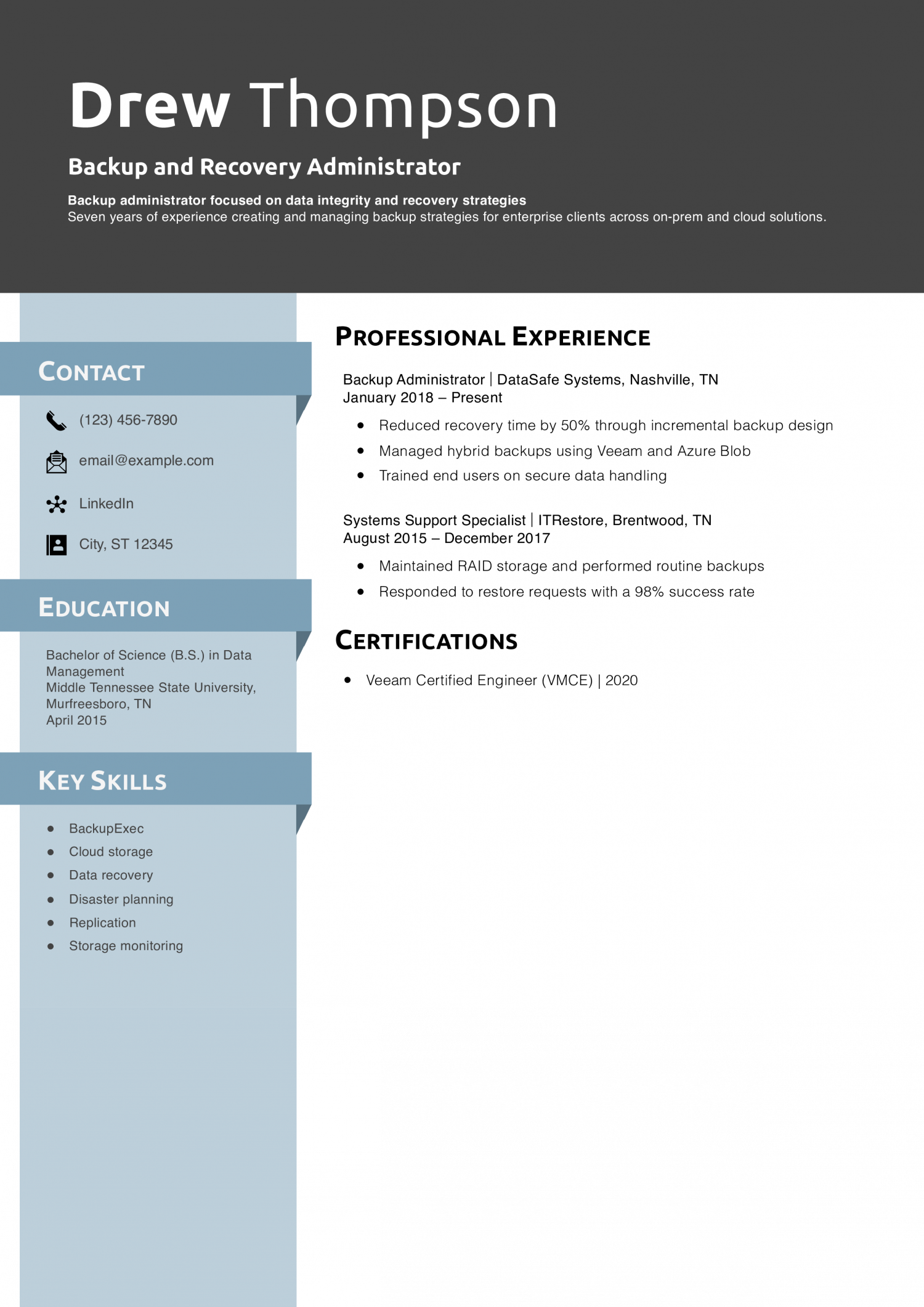
Why this backup and recovery resume is strong
Drew shows impact on business continuity and data protection. Their use of metrics and tools adds credibility.
Key Tips:
- Include backup success rate or recovery speed
- Mention storage types and backup software
Need help naming this role? See job title examples for your resume.
Database Systems Administrator Resume Example
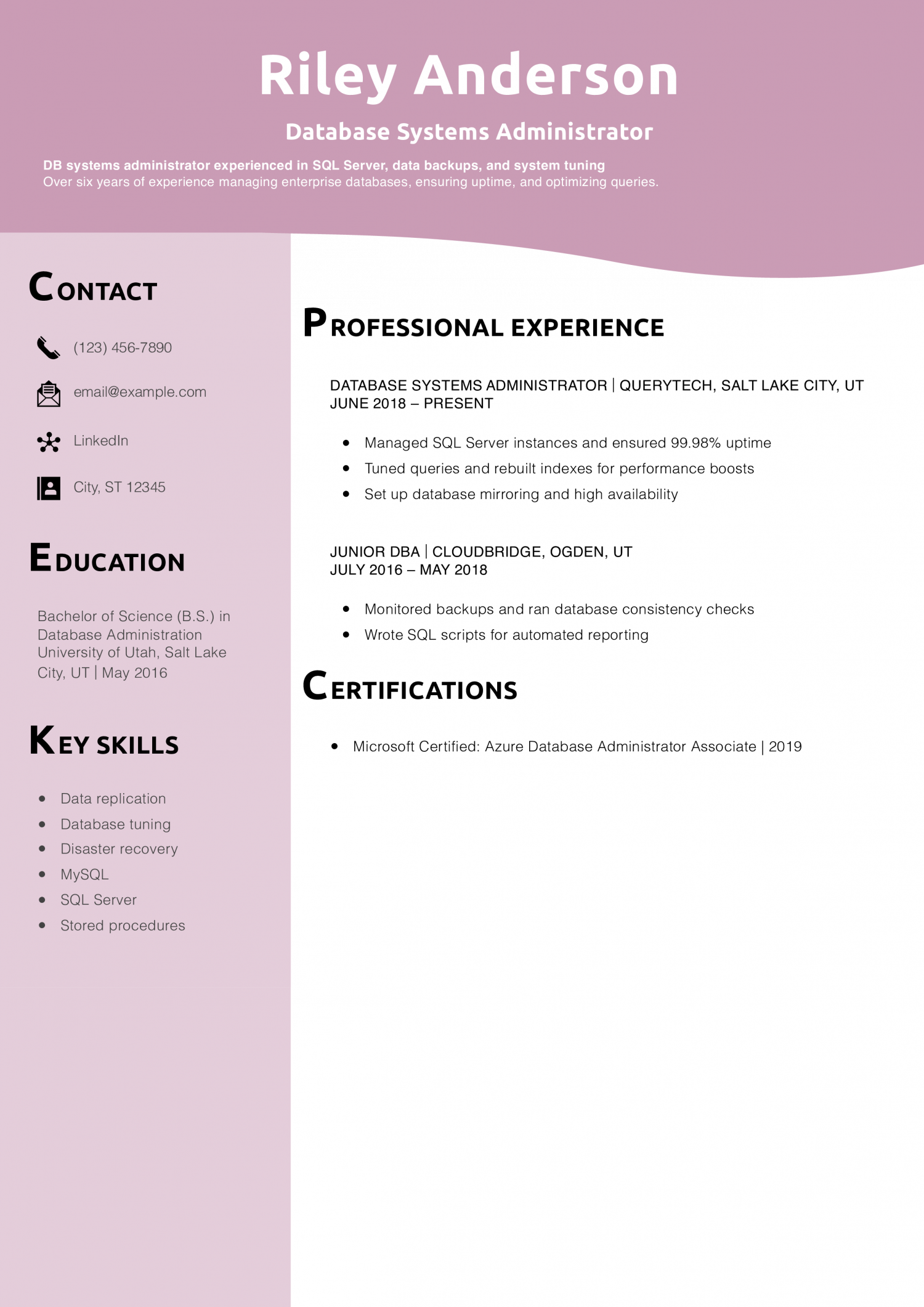
Why this DBA system administrator resume is strong
Riley’s resume shows real business-critical support and uptime management. Their SQL tuning achievements demonstrate value.
Key Tips:
- Include SLA metrics and availability data
- Mention tools or scripts used
Learn how to structure your doc with resume outline examples.
Application Systems Administrator Resume Example
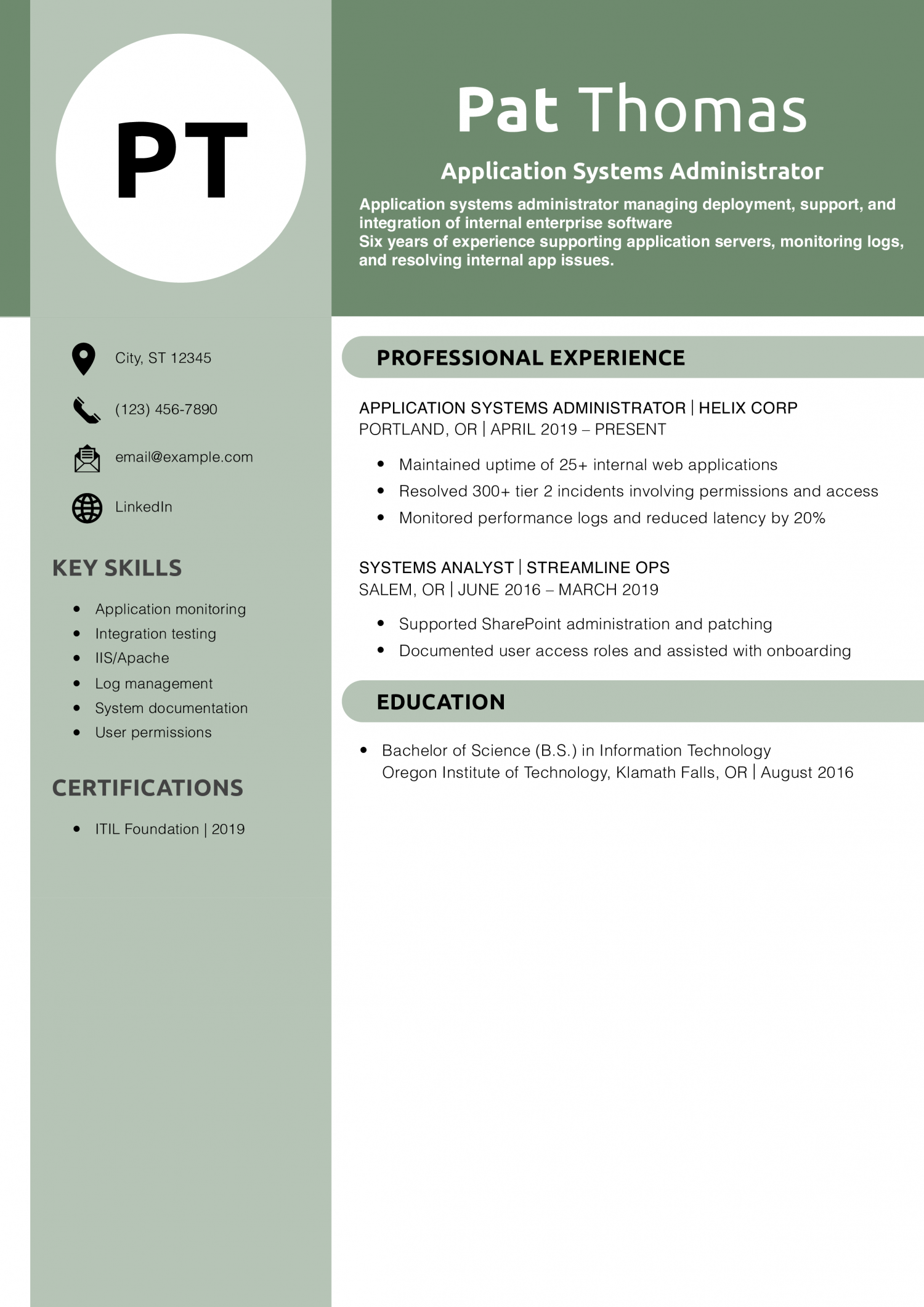
Why this application administrator resume example is strong
Pat’s resume emphasizes performance and internal systems management. Their use of metrics and incident resolution is effective and focused.
Key Tips:
- Include application types supported
- Detail resolution time and support volume
Want to improve impact? Try resume action words.
System Administrator Text-Only Resume Examples and Templates
How To Write a System Administrator Resume
A template can help you organize your career information for an effective system administrator resume. Your system administrator resume should usually include these sections:
- Contact information
- Profile
- Key skills
- Professional experience
- Education and certifications
Before starting work on your resume, jot down your preferences for your target job duties, industry, company size, or work culture. These notes will help you determine and emphasize your best career details as you develop each section.
1. Share your contact information
Give your full name, phone number, email address, location, and links to any online professional profiles. Ensure your current contact information so employers can reach you for an interview.
Example
Your Name
(123) 456-7890 | [email protected] | City, State Abbreviation Zip Code | LinkedIn
2. Craft an outstanding profile with a summary of your system administrator qualifications
Impress hiring managers at the top of your resume by giving the three to five primary reasons you can excel as their next system administrator. Consider what sets you apart from other candidates, such as your:
- Years of related work experience
- Main strengths or specialties
- Work style or approach (efficient, diligent, collaborative…)
- College degree(s) or certifications in your field
Example
A seasoned information technology (IT) system administrator with proven experience managing and monitoring systems and infrastructure, identifying and resolving performance bottlenecks, and enhancing network security at leading tech companies. Certified in Azure Administration, Network+, and Information Systems Security.
3. Showcase your system administrator experience
For each job in your recent work history, brainstorm your (possibly various) duties and achievements on a separate document or sheet of paper. Then, review your notes in light of your target job, and choose the most relevant ones to feature as bullet points in this section. You can create a detailed and focused experience section by filtering your information.
Example
Senior Linux System Administrator, International Business Machines (IBM), New York, NY | June 2016 – Present
- Maintained and optimized over 100 Linux servers, resulting in a 20% improvement in overall system performance
- Implemented a new security protocol that reduced system breaches by 30%
- Developed a comprehensive backup and recovery system, which has ensured 100% data recovery in instances of system failures
Resume writer's tip: Quantify your experience
When possible, cite relevant performance data and metrics to show the results you’ve achieved as a system administrator. Hard numbers put your work in context and give recruiters a better sense of your scope and impact.
Resume writer's tip: Tailor your resume to each application
For each job posting you respond to, note any details about the hiring organization’s size, industry, customer base, or products and services. How do these areas compare to your recent experience? You can make a stronger first impression on the hiring manager by citing these similarities in your profile.
For instance, say the company is in manufacturing. You could enhance your profile by changing your first line from “Manager with seven years of experience” to “Manager with seven years of experience including three years in manufacturing.”
What if you need to gain experience as a system administrator?
Writing a resume can be hard if you don’t have real-world experience. But remember, you still have valuable skills and knowledge from your education and training. Include any relevant coursework you’ve done or certifications you’ve earned. Also, describe volunteer work or internships you’ve completed in your field, and emphasize your work ethic and willingness to learn. By focusing on these qualities, you can show you’d be an asset to any team.
4. Outline your education and system administrator-related certifications
With the education and certifications sections, you can show you have a strong knowledge base in your field. Cite any credentials you’ve earned that speak to your abilities as a system administrator. Below are templates and examples to help you organize this information on your resume (note, years are optional).
Education
Template:
[Degree Name], [School Name], [City, State Abbreviation] | [Graduation Year]
[Relevant coursework or honors]
Example:
Bachelor of Science in IT, Stanford University, Stanford, CA
Certifications
Template:
[Certification Name] | [Awarding Organization] | [Completion Date]
Examples:
Cisco Certified Network Professional (CCNP), Cisco
5. Outline your most useful system administrator skills and proficiencies
A skills section lets you quickly show how to add value to an organization. It also helps your resume perform well on applicant tracking systems (ATS) employers use to screen candidates. Below, you’ll find some key terms and skills to consider for this section:
| Key Skills and Proficiencies | |
|---|---|
| Database management | Network configuration and management |
| Network maintenance | Network security protocols |
| Policy development | Security management |
| Server maintenance | Shell scripting and automation |
| System backup and recovery | System monitoring |
| System upgrades | Technical troubleshooting |
| User support | |
Resume writer’s tip: Use common action verbs
One of the best ways to enhance your resume is by starting each bullet point with a strong action verb. Dynamic verbs help you make your resume clearer, more concise, and more engaging than with nouns or noun phrases.
Do
- "Managed and motivated a 12-person team "
Don’t
- "Responsibilities included management of a 12-person team "
The following list can help you find a good mix of action verbs for your system administrator resume:
| Action Verbs | |
|---|---|
| Created | Decreased |
| Enhanced | Fostered |
| Generated | Grew |
| Improved | Increased |
| Introduced | Lowered |
| Managed | Prevented |
| Ranked | Reduced |
| Streamlined | Updated |
| Won | |
How To Pick the Best System Administrator Resume Template
The best resume templates are simple and easy to edit. Choose one that lets you quickly add, delete, flesh out, rearrange, and reorder sections. With a flexible design, you can tailor and optimize your resume for each job application.
Frequently Asked Questions: System Administrator Resume Examples and Advice
First, look closely at the job post text and note any repeated or emphasized words. Compare these phrases to the language you're using in your resume, particularly the profile and key skills sections. Then, seek ways to align your resume language with the job posting while not copying phrases or misstating your background. For example, if the organization seeks someone collaborative, call out that aspect of your experience in your profile. Or say the company has many non-English speaking customers. Cite your foreign language skills in your profile and as a separate section farther down the document. With adjustments like these, you can make your resume more relevant to each opportunity.
The key difference between a System Administrator CV and a System Administrator resume example is the level of detail. A CV is typically more comprehensive, listing all relevant experience and achievements, whereas a resume example is more concise, focusing only on the most relevant information for a particular job. The CV can also include academic background and research work, while a resume is usually more focused on professional experience and key accomplishments.
The combination or hybrid format merges a functional resume's profile section with a chronological resume's experience section. Most modern resumes (including the ones on this page) follow this format because it gives hiring managers the clearest view of an applicant's strengths and work history.
Include a cover letter with your resume
A good cover letter can enhance your job application. To write a standout letter, get specific. Tell the hiring manager why you’re interested in their organization and the system administrator role they hope to fill.
Check Out Related Examples
Resume Templates offers HR approved resume templates to help you create a professional resume in minutes. Choose from several template options and even pre-populate a resume from your profile.

